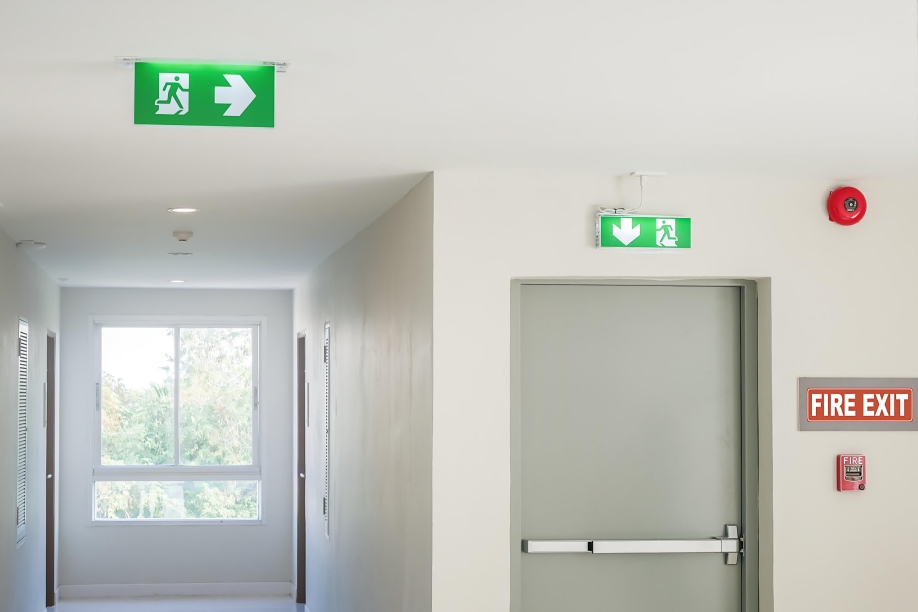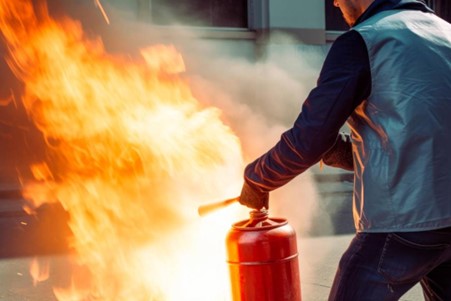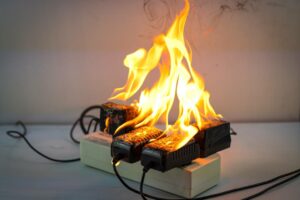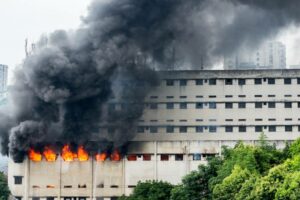In Malaysia, the CO2 fire extinguisher is a common sight in buildings, designed to offer a quick and effective response to fire emergencies.
However, its application is not universally appropriate for all fire situations, as there are critical considerations surrounding using CO2 fire extinguishers.
This article equips our readers with the essential knowledge to make informed decisions about fire safety, ensuring they are prepared to act appropriately in fire emergencies.
What are the Proper Uses of a CO2 Fire Extinguisher in Malaysia
Carbon dioxide (CO2) fire extinguishers are highly effective for certain types of fires due to their unique method of extinguishing flames.
They work by displacing the oxygen around a fire, effectively smothering it without leaving any residue, which makes them ideal for use on electrical equipment and machinery.
Hence, CO2 fire extinguishers are predominantly used for:
1. Class B fires
CO2 fire extinguishers are particularly suitable for Class B fires, which involve flammable liquids like petrol, oil, solvents, and certain types of gases. As such, these extinguishers are suitable for environments like automotive garages, workshops, and manufacturing plants where such flammable materials are often present.
2. Class E fires
Class E fires are electrical fires that often result from faults in electrical equipment, wiring, or overloaded circuits.
The non-conductive nature of CO2 fire extinguishers ensures that they can be safely used on or near electrical appliances and installations without exacerbating the fire or causing further damage.
The absence of residue is also a significant advantage for use in areas dense with electrical equipment, such as server rooms.
This prevents damage to sensitive equipment as well as data loss.
Read More: Fire Extinguisher Renewal Malaysia: What is a BOMBA License
When Should You Avoid Using a CO2 Fire Extinguisher

While CO2 fire extinguishers are valuable tools in combating fires, there are specific circumstances where their use should be avoided to ensure safety and effectiveness:
1. Confined spaces
In confined spaces, the rapid displacement of oxygen by CO2 can create a hazardous environment, making breathing difficult.
This situation poses a significant risk, not only from the fire itself but also from the potential for asphyxiation due to the lowered oxygen levels.
2. Flammable gases and cooking fires
Carbon dioxide fire extinguishers should not be used for fires involving carbon-based combustible solids (Class A) and cooking oils, fats and grease (Class F).
Carbon-based combustible materials like wood, paper, and cloth can continue smouldering and potentially reignite after the CO2 disperses.
For the latter, the high-pressure discharge of CO2 can cause the burning oils to splash and spread, exacerbating the fire rather than extinguishing it.
3. Absence of black horn
The extreme cold generated when CO2 is discharged from the extinguisher can pose a risk of frost burn to the user.
This is particularly a concern if the extinguisher lacks a frost-free horn, which is designed to minimise this risk.
Aside from faulty equipment, mishandling the extinguisher or using one without this safety feature can also lead to injuries.
Read More: What are Fire Resistant Materials in Malaysia
Empower Your Fire Safety Strategy with Palcon
In conclusion, a comprehensive understanding of when and how to use fire extinguishers is necessary to ensure the safety of your family and coworkers
It’s also important to be aware of the limitations of CO2 fire extinguishers for certain types of fires and the risks when used in confined spaces and without proper safety features.
For those seeking to enhance their fire safety protocols, Palcon provides tailored advice, fire safety training, and service and maintenance for various types of fire extinguishers.









